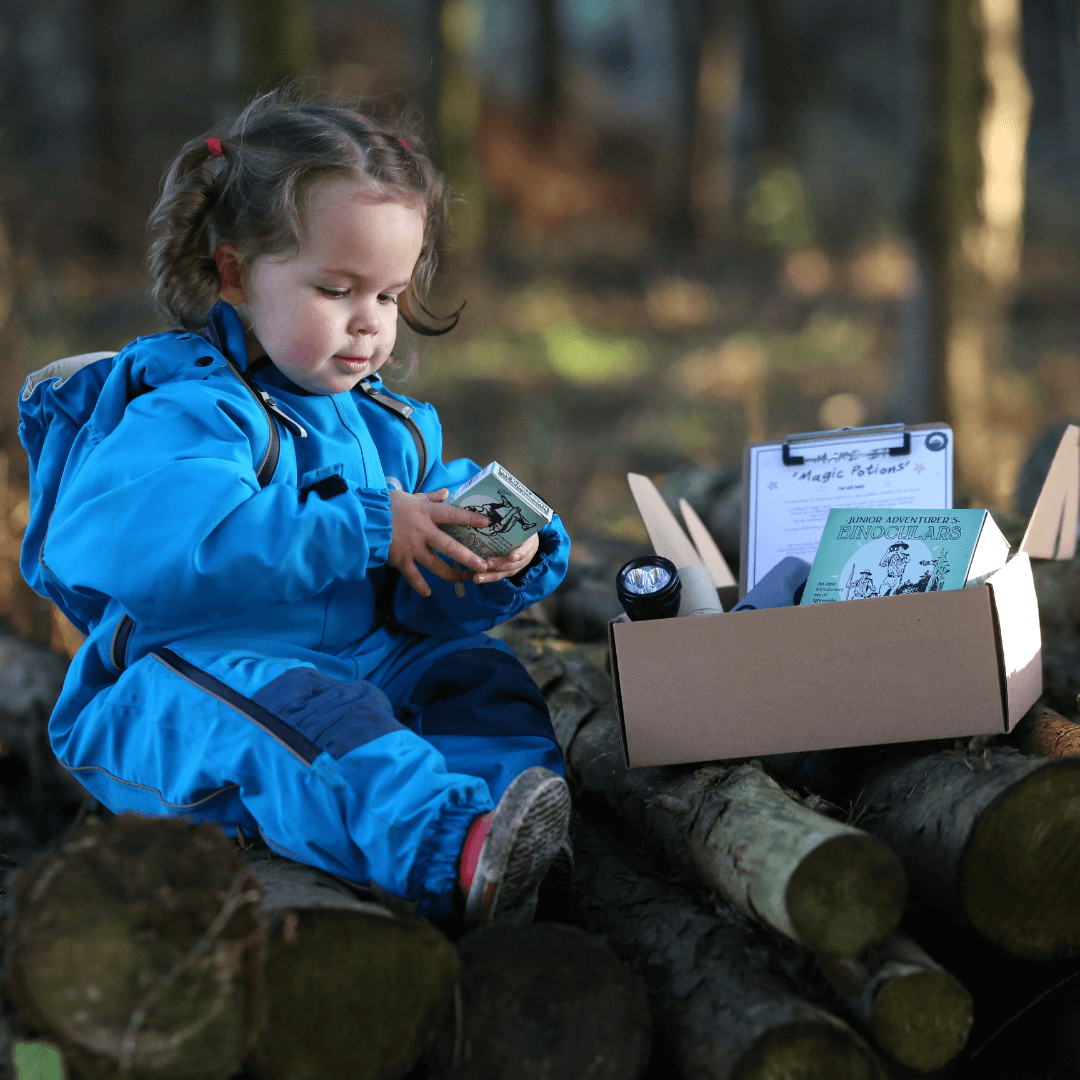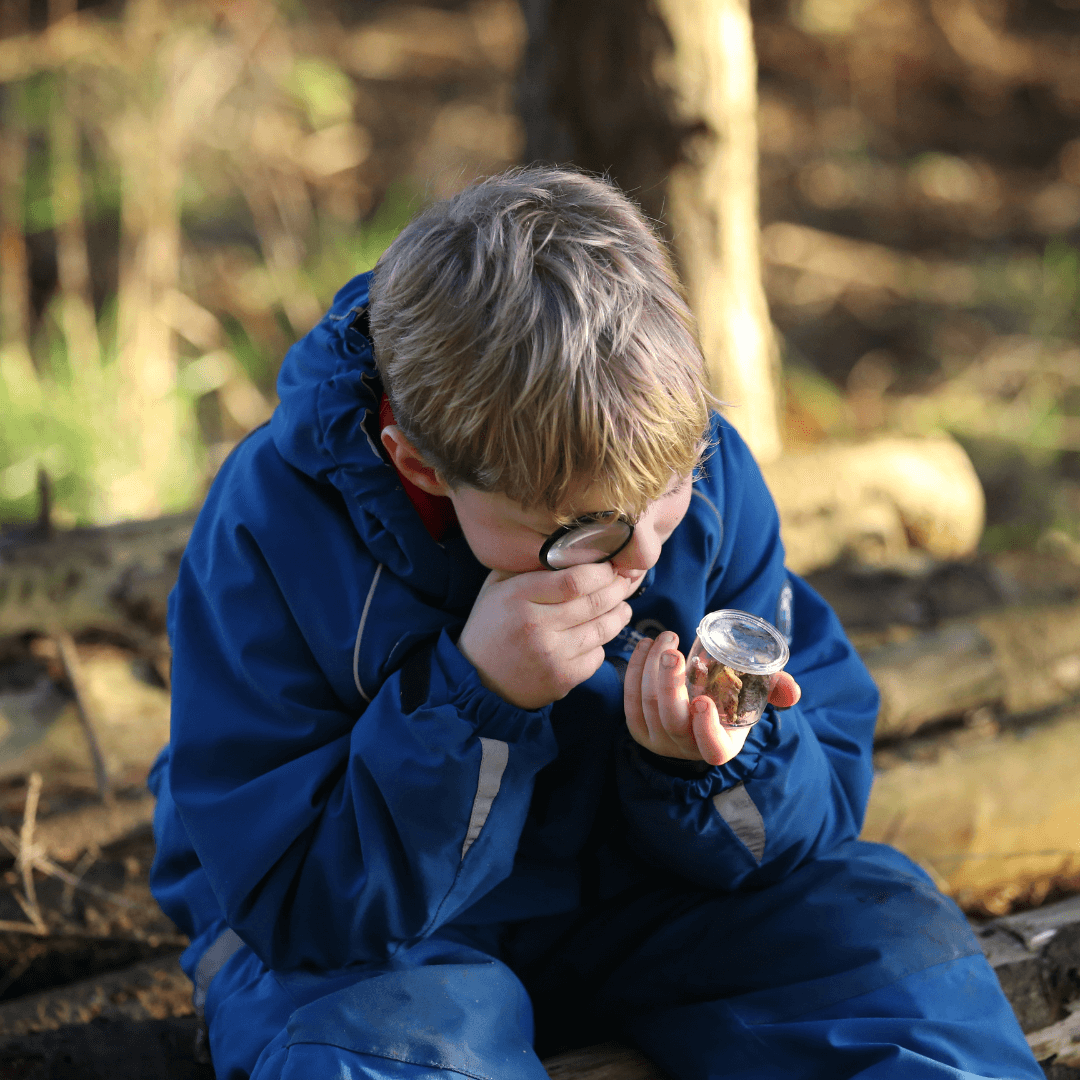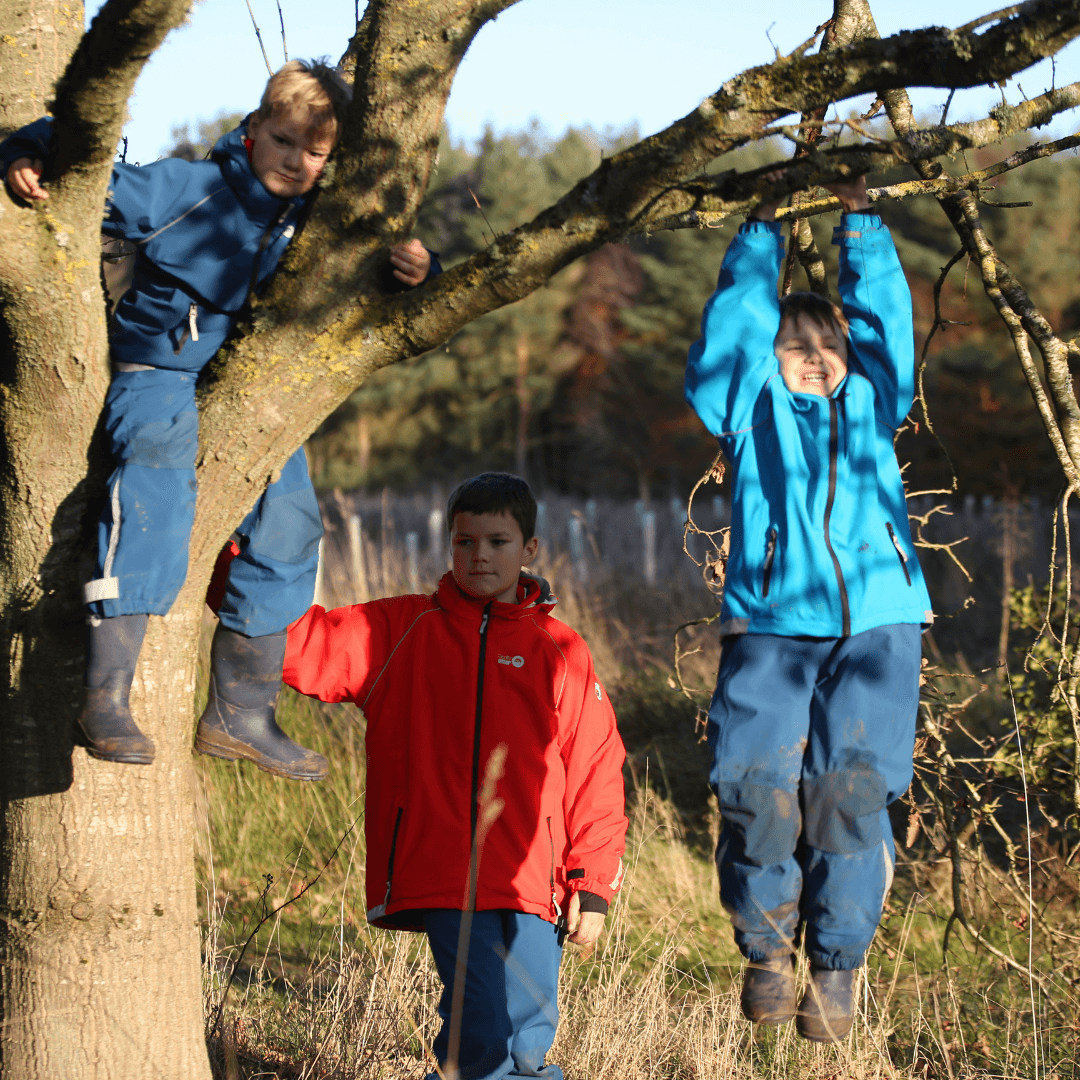20 Fun activities to enjoy during National Walking Month
Posted by Spotty Otter on 29th Apr 2023
May is National Walking Month. A month that means we should consider the health and wellbeing benefits of walking, keeping active and being outdoors. Getting outside is free and fun, here at Spotty Otter we are passionate about getting kids out in the great outdoors. We have shared 20 easy activities that will keep your kids entertained while out on a walk, we also have FREE printable activities you can use to help get outside this month.
1- Collect nature
Going for a nature walk and looking for things to collect is such a fun way to help kids enjoy being outside. You could them a basket or a bucket to collect as they go or follow a scavenger hunt!
2- Pack for an adventure
We have created a box of nature exploring essentials to compliment our Nature Club content. It contains all you need to get started on your nature journey, so you can simply pop on your wellies and go! The box contains, Spotty Otter neck scarf, wooden A5 clipboard, 5 Nature Club activity sheets, set of 12 wooden colouring pencils, childrens binoculars, pocket magnifying glass, small bug pot and an Led torch!

Shop HERE.
Simply sign up to our newsletter to gain exclusive access to our Nature Club, including access to all the downloads and activities we've released so far, no matter when you join, plus our latest news, new arrivals, special offers and more. You can join Spotty Otter Nature Club HERE.
3- Bird Watching
You don't need to go far to spot birds. Birds can be seen on the city street as well as in parks, gardens, and nature preserves. It does help if you can stick to areas near water if you can. You’re likely to spy herons, ducks, and swans, which are easier for kids to see.

4- Play Walking Bingo
If you’re going out for a walk, why not play a game of our walking bingo? It’s a great game for children and adults to play together. See how many of the things on our list you can find. Remember to shout BINGO if you find them all.
Download HERE.
5- Do some bark rubbings
Kids will love exploring the patterns and textures of bark with this tactile activity. Simply take some crayons and paper on your next trip to the woods. Choose a bumpy tree with interesting bark. Place the paper against the trunk and rub the crayon over the paper to make a print of the bark pattern. Encourage your children to experiment with different trees, then take a look at the bark rubbings to see how they compare. All you need is wax crayons and paper!
6- Play pooh sticks
Poohsticks is a game first mentioned in a Winnie the Pooh book, tt is a simple game which may be played on any bridge over running water; each player drops a stick on the upstream side of a bridge and the one whose stick first appears on the downstream side is the winner.
7- Balance on logs
Walking along logs can help kids develop their core strength and balancing skills. The logs also provide different levels of risk taking.

8- Dress up in fairy wings for a magical walk
We DO believe in fairies, and there's nothing more magical than searching forests, woodlands and gardens for hidden fairy houses. So put on your own fairy wings and see if you can find some magic.
9- Go on a scavenger hunt
There are so many great scavenger hunt ideas for kids. Use our free printable scavenger hunt for kids to take on a walk. Scavenger hunts are fun for toddlers, preschoolers and even big kids. Download HERE.
10- Play hide and seek with your friends
It seems that hide-n-seek could be one of the most well-known children's games. For thousands of years, the timeless children's game of hide-n-seek has been played all across the globe! Why not play while out on a family walk. Hiding and seeking in pairs might be a safer option if playing in a big space.
11- Hunt for minibeasts
A minibeast hunt is a great way for children to get up close to nature. It gets them out in the fresh air, encourages them to use their observation skills, and it gives them a chance to get hands-on with wildlife. All in all it's a great activity for your whole family to do together.

12- Go for a picnic
Such a simple idea to make getting outside fun, pack some snacks or a picnic and find a nice spot to sit down and enjoy!
13- Play I spy
This fun 'I Spy with My Little Eye' educational game worksheet allows children to practise hearing and saying the initial sounds in words. I Spy teaches young children to hear the first sound in a word, for example the 'b' in ball or the 'c' in cat. This is a great skill for children to have as they begin learning to read and write, and playing this simple phonics game will really help, for young children, use colours “I spy something red”.
14- Create art on the ground using nature like shells, stones, sticks and leaves
Nature art (also sometimes called land art) is a wonderful nature activity that encourages creativity and fine motor skills in children of all ages and abilities.All you need to create nature art is your imagination and natural found materials like leaves, sticks, stones, pine cones bark and grass etc. You could have a nature treasure hunt in the garden or go on on a nature walk to find natural materials to play with.
15- Have a penny hike
At each junction, toss a coin and let the coin decide which way you go. Heads for left and tails for right, or vice versa! So simple but so fun!
16- Take photographs
Letting your child take some photos can add some variety to your daily walk and they will probably love being in charge of the camera. Try writing a list before you go out of things to photograph. It’s also a good way to ‘collect’ the items on your ‘I spy’ lists. You could set a theme for the photos you take on your walk and print them off when you get home to turn into a collage.
17- Climb a tree
Most children love tree climbing and the challenge and adventure of climbing trees in the natural world. Not only is climbing trees a great exercise, but tree climbing also has several educational benefits for the developing child. When your child starts to swing from tree limbs and try to climb trees, this is usually an indication of readiness. Invite your children to start with small “easy” trees to climb and progress as they gain mastery. Support your child’s first efforts, then step back and allow them to do it independently.

18- Splash in puddles
When we see mud puddles, we avoid them. When kids see mud puddles, they jump in and splash in them.Their desire to do so is driven by their natural instinct to explore and discover using senses and motor actions. Thus they build a storehouse of knowledge about the physical world. Through this and similar outdoor activities children master essential life skills such as problem-solving, ability to focus and respond to changing contexts, as well as decision-making. In other words, exposure to natural settings enhances their cognitive development.

19- Have a go at map reading
Give your child a map (either print off a map of your local area or use your phone). You can teach your child how to read the map, identify north and south, and try to navigate. Maybe you can encourage your child to plan a route or draw a map of your route before you head out. You could also use a mapping app on your phone and show your child how to use it.
20- Look for animal tracks in the mud
Wildlife can sometimes be hard to spot, especially if it is nocturnal. But the signs that animals frequent an area can be a good start to discovering all kinds of species, from rare otters to common rabbits. In fact, ecologists rely on animal signs to help them understand the numbers, behaviours and movements of species. Such animal signs include calls, burrows, leftover meals, territorial markings, fur, droppings and tracks.
We hope to have inspired you to get outside and go for a walk this Month.
Please show us what you get to!

